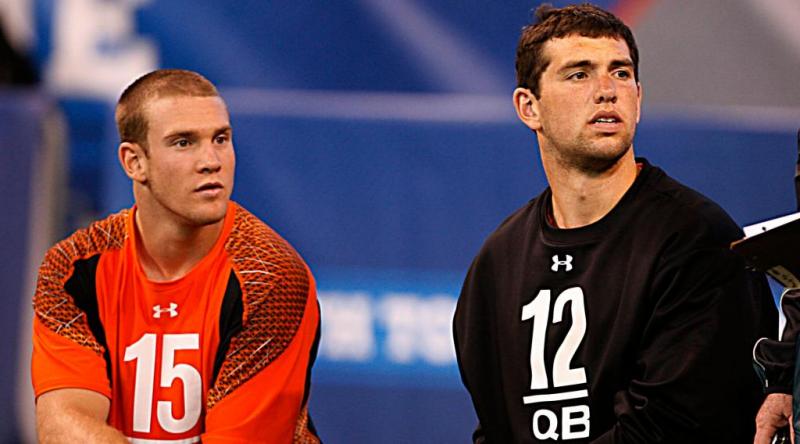Understanding the NFL Draft
Every year, the NFL Draft is one of the biggest off-field sports spectacles in the nation. Fans tune in in droves to find out who the future stars of their favorite teams will be. The fact that the draft is such an inexact science with so many picks faltering or failing to produce for the team that drafted them does little to dampen the popularity of the event.
None of this is the least bit surprising however. The surprising part of the NFL Draft is when a player’s stock can rise or fall so much just from the few months between when the football season ended and the April draft. No more games are played; no more statistics are accumulated and yet players often find themselves in a much different position on draft boards come mid-April than where they were at the time of their bowl game. How does two months of drills and testing erase years of on-field production as the go-to determination of a player’s worth? This happens every year and every year it is boggling.
When the season ended, Baylor had completed a wildly successful season (especially for Baylor’s standards) and Robert Griffin III had taken home the Heisman Trophy, most mock drafts had the skilled quarterback being taken somewhere around pick eight. He cracked the top 10 on a lot of people’s drafts but not others. He was expected to be a difference-making QB but teams were not sure how much of a difference, thus the slotting. Then, he ran a 4.3 40 and threw some passes with no one playing defense and now RGIII being taken second overall in this month’s draft is a foregone conclusion. Whether it was the Redskins trading up to that spot or someone else, Griffin was going to be taken as the second player off the board. His draft stock skyrocketed from borderline top 10 talent to guaranteed second pick without him playing a single snap.
Even more egregious was the jump by fellow Big 12 quarterback Ryan Tannehill. I cannot even recall where Tannehill was on draft boards after the year ended…which maybe says quite enough about his pro prospects at the time. He was no slam dunk to even be the third quarterback off the board as a few other signal callers were vying for that spot. Now, after throwing for zero more yards and zero more touchdowns, Tannehill, it is speculated, could be a legitimate option for the Browns at fourth overall. He, it seems, is almost being set up to fail. After watching him start for just two seasons in college, no one thought he was anywhere near a top five talent. Yet in the span of 12 weeks, Ryan Tannehill has somehow become a valid franchise quarterback prospect.
I realize there is a place and a value to knowing a player’s tangible skills and seeing them workout or at the combine, but how has that become almost more important than what they produced on the field during actual games?
The same thing happened last year and it will happen again next year. Sometimes the reverse also happens. A player’s stock drops considerably because they ran slow or performed poorly in a workout, overshadowing the plays during games where they were plenty fast enough and performed admirably. It seems like teams are too careful or outthink themselves when it comes to the draft. Everyone loves huge verticals and blazing speed and arm strength but, come April, not enough front office folks love Saturday production week after week, year after year.

